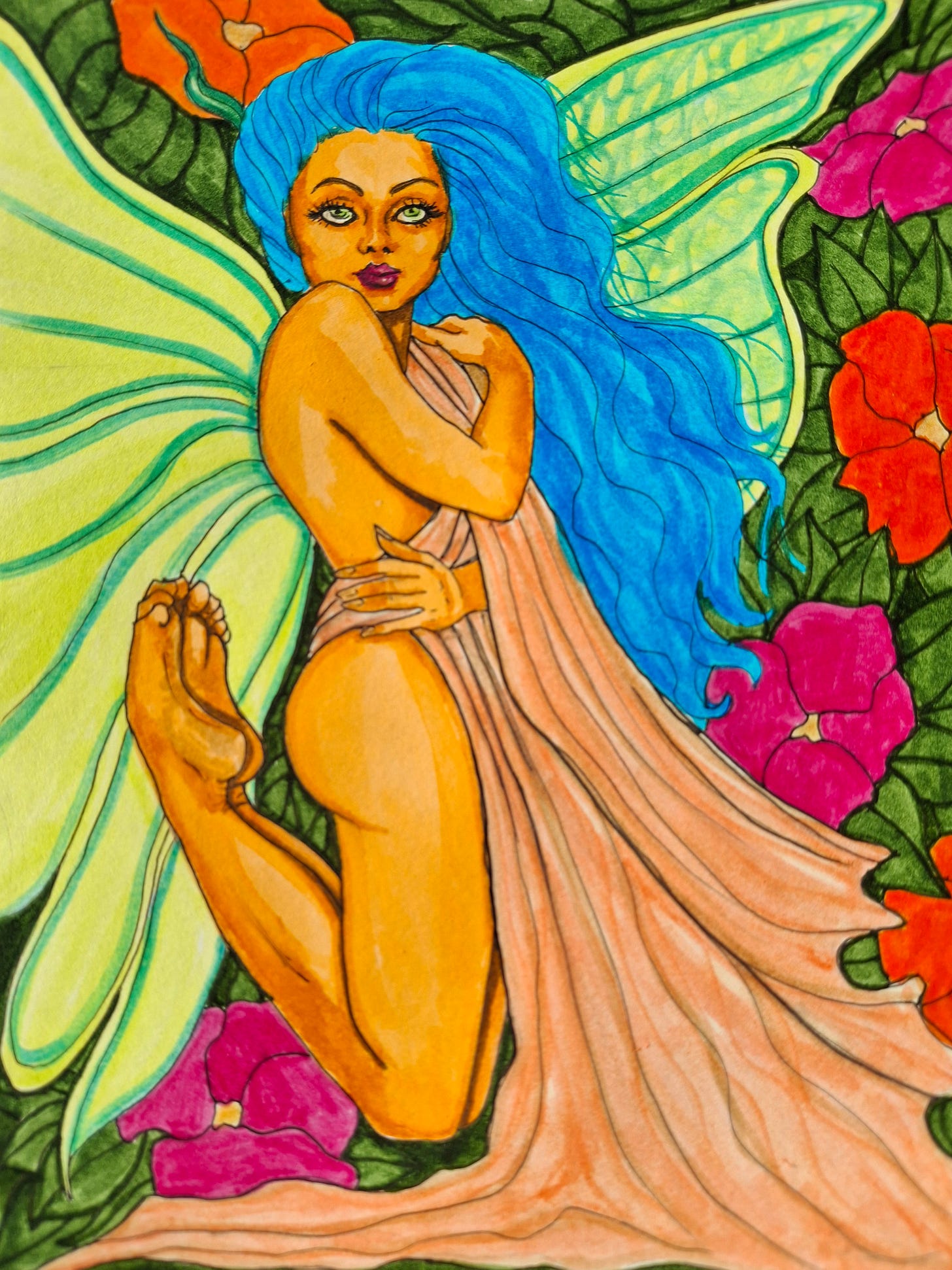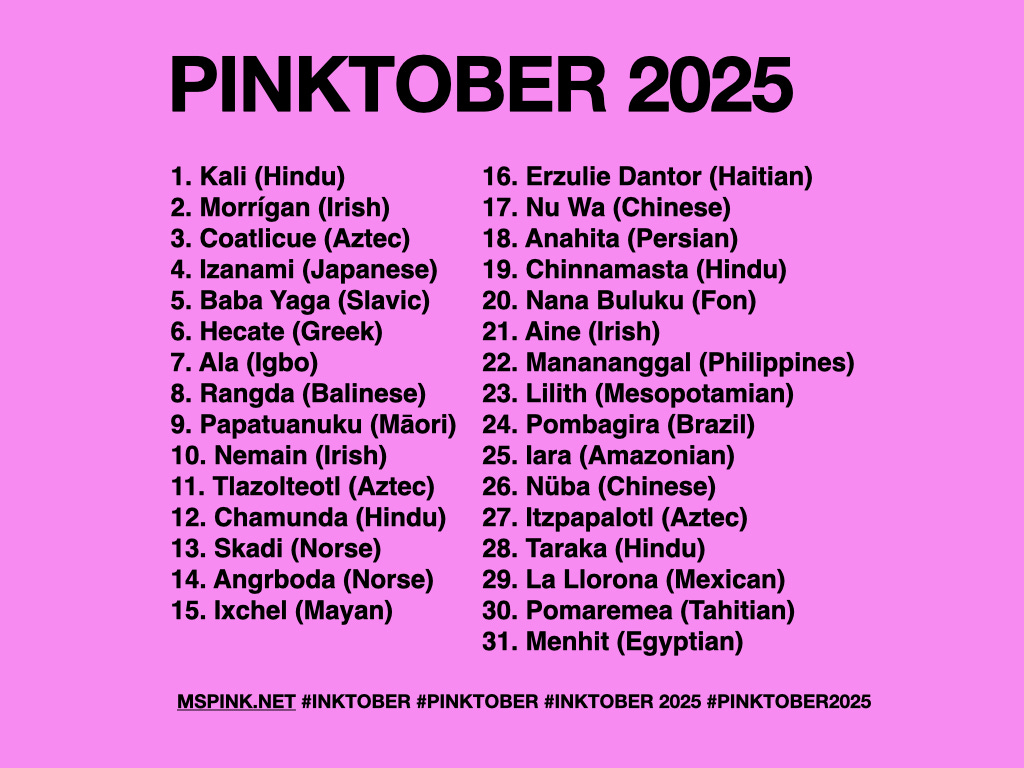Pinktober 2025: Week 4
Four weeks down, one to go!
This week’s roundup of badass goddesses is an interesting mix… Let’s jump right in.
Day 18. Anahita, Persian River Goddess
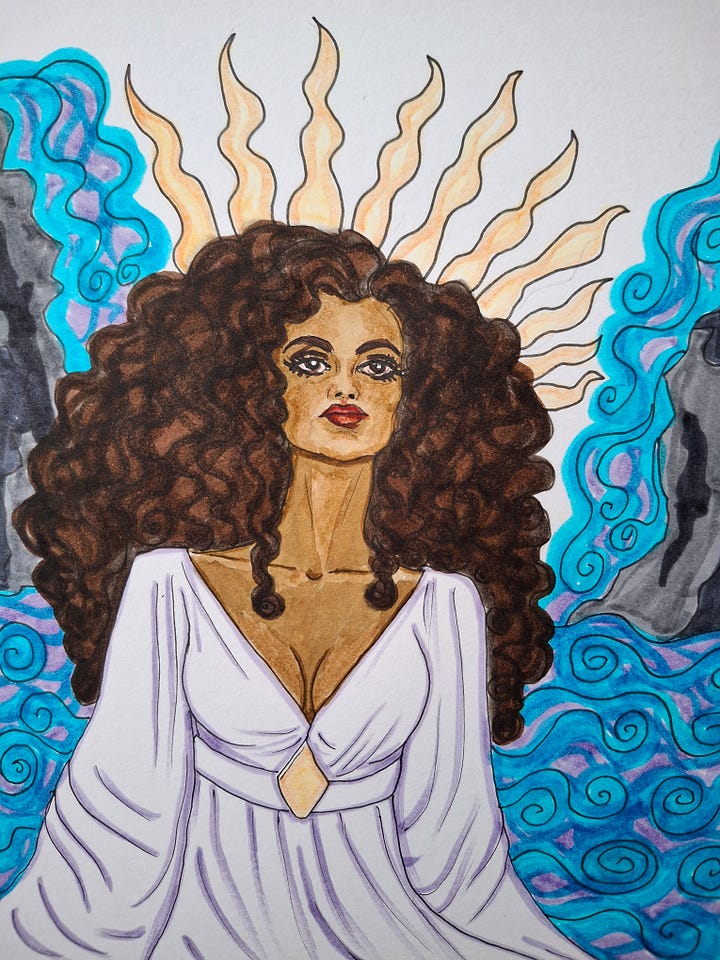
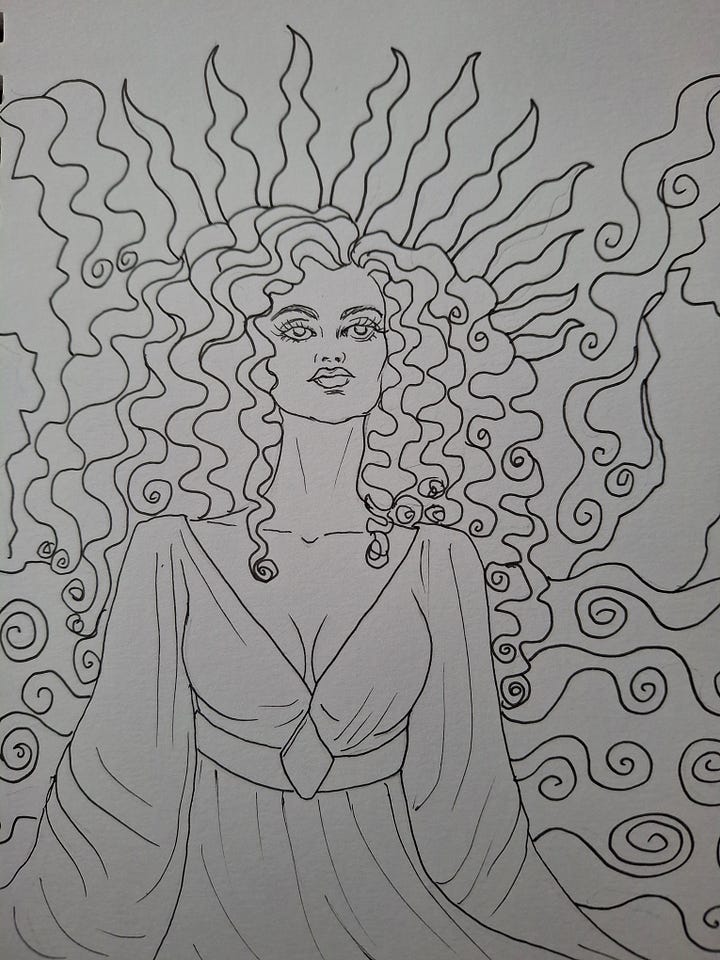
Anahita is the Persian goddess of water, fertility, and wisdom. Her name means “the immaculate one,” but her power is anything but passive; she’s the current that shapes empires.
Throughout ancient Persia’s myths and rituals, Anahita was symbolized as both a nurturing river, revered for her purifying and life-giving properties, and a warrior queen, riding a chariot drawn by four fierce horses named for the elements: wind, rain, cloud, and sleet.
She embodies the flowing nature of water, but also the nourishing rush of fertility and divine inspiration. Her waters cleanse both body and spirit, and drown arrogance.
Her regal bearing defies corruption, uplifting all who bathe in her brilliance.
Day 19. Chinnamasta, Hindu Goddess of Paradox
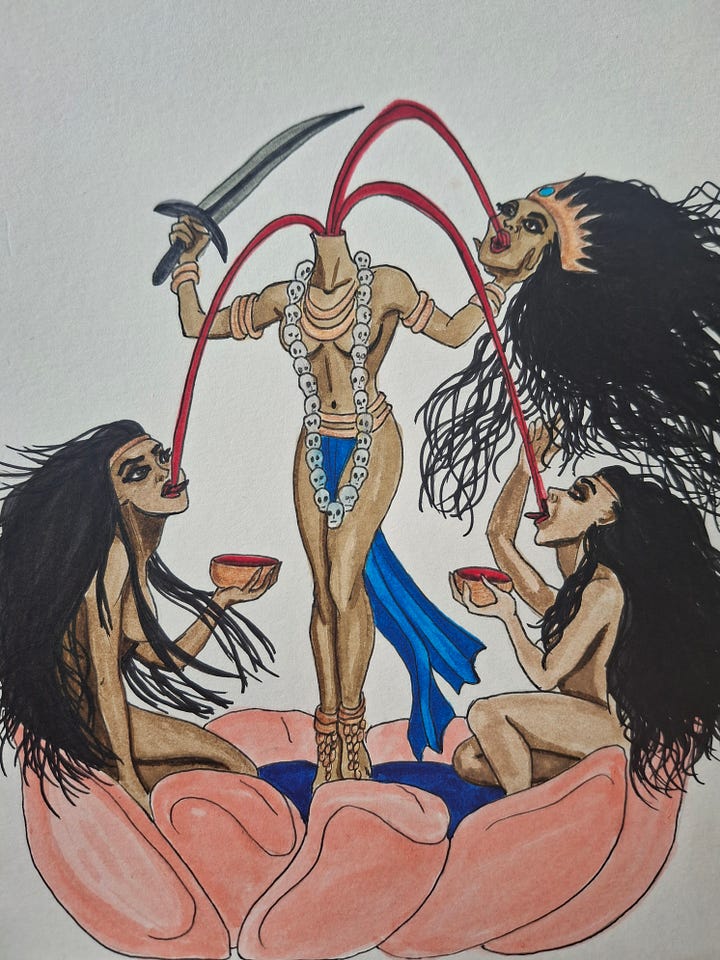
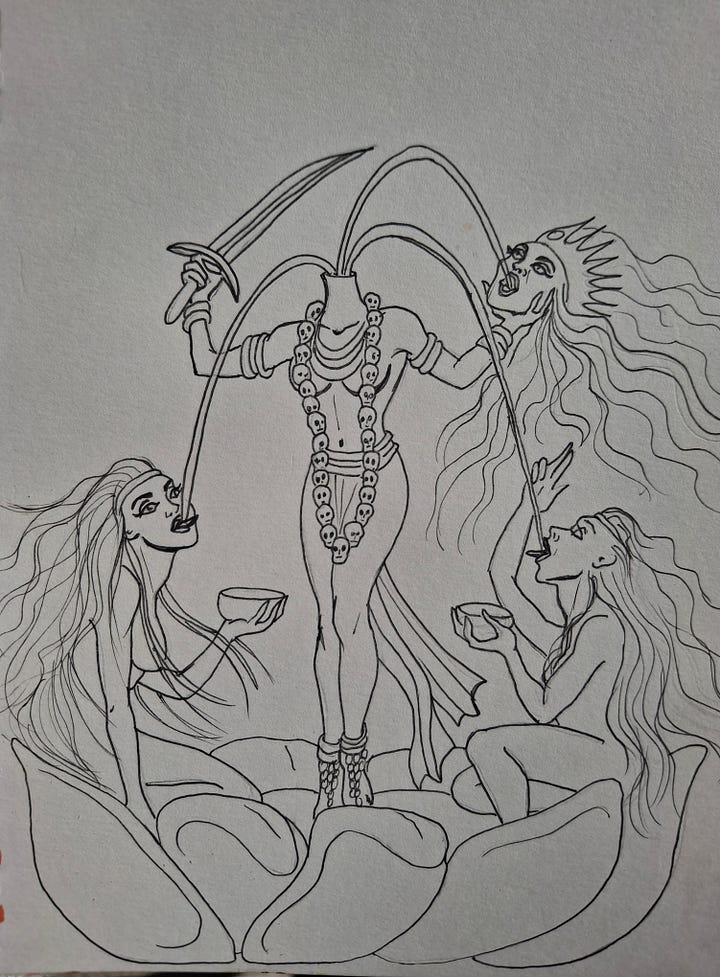
I know what you’re thinking, but hear me out on this one! The iconography associated with Chinnamasta is among the most out there I’ve encountered in all the badass goddesses I’ve drawn over the years. Let’s unpack the myth behind the bloodbath…
Her name literally means “She whose head is severed,” and she’s one of the Mahavidyas—ten fierce faces of the Divine Mother who teach truth through extremes (the most famous of which is Kali the Destroyer).
Chinnamasta is seen holding her own head in one hand and a sword in the other. A fountain of blood pours from her neck in three streams, one feeding her severed head, the other two feeding her attendants. In many depictions, she stands on a pair of naked lovers locked in passionate embrace.
She symbolizes the realization that ego death is the necessary step towards enlightenment, which she takes in a powerful act of bloody self-decapitation. Creation requires surrender, and true understanding can come in the flash of a blade.
For all its blood and brutality, the meaning is beautiful; in severing the ego so that pure spiritual wisdom can flow, she nourishes not only herself but those who follow her lead, an eternal cycle of birth, death and renewal.
Day 20. Nana Buluku, Fon Primordial Mother Goddess
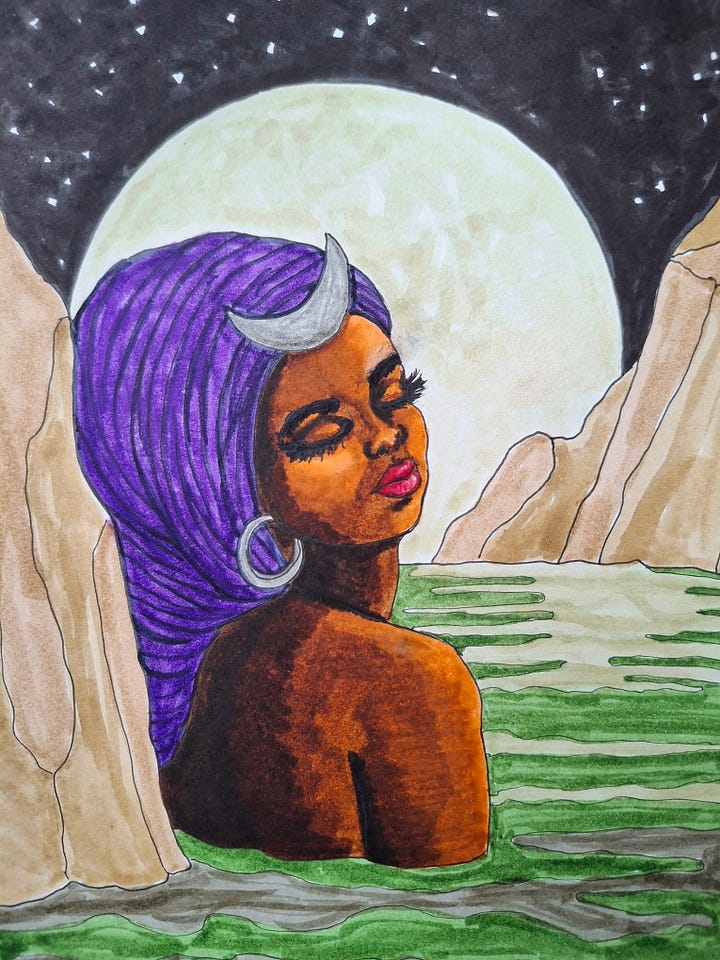
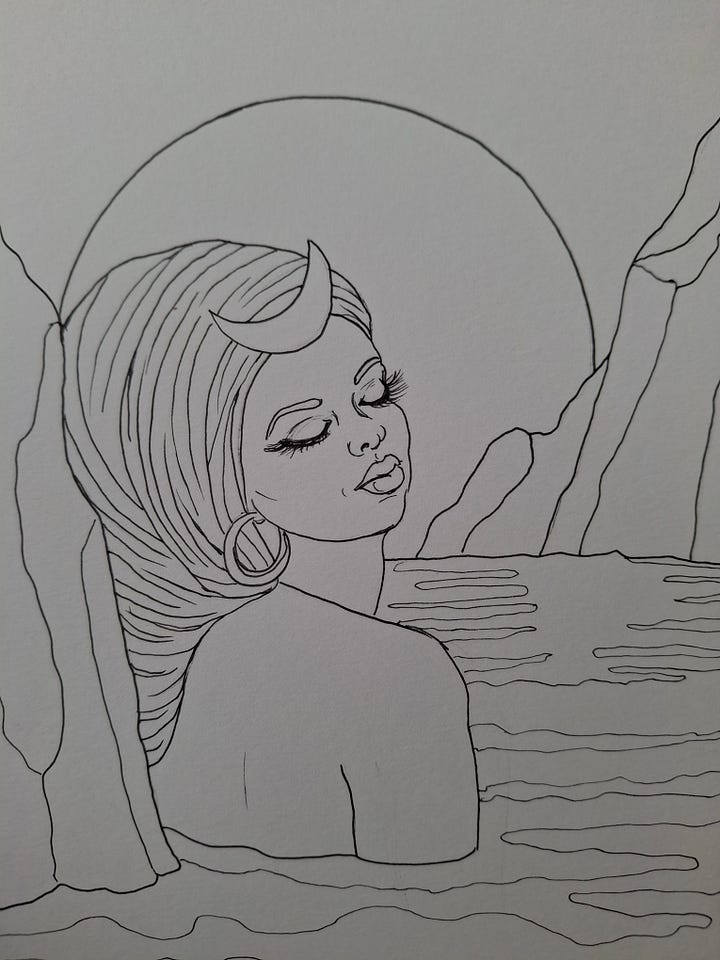
Nana Buluku is the primordial mother goddess of the Fon people of West Africa, considered the supreme creator of the universe, the sun and the moon. She was the first goddess, grandmother to the gods, who dreamed existence into being.
As the mother to the sun and moon, fraternal twin deities, she represents divine feminine power, embodying balance, fertility, and wisdom, and is associated with the cosmos, water, and healing.
Often depicted bathing, surrounded by water, mountains, medicinal plants, and snakes, she is a quiet force of nature, sitting back to rest after passing on the hard work of running the universe to her divine offspring.
Day 21. Aine, Irish Goddess of Summer and Sovereignty
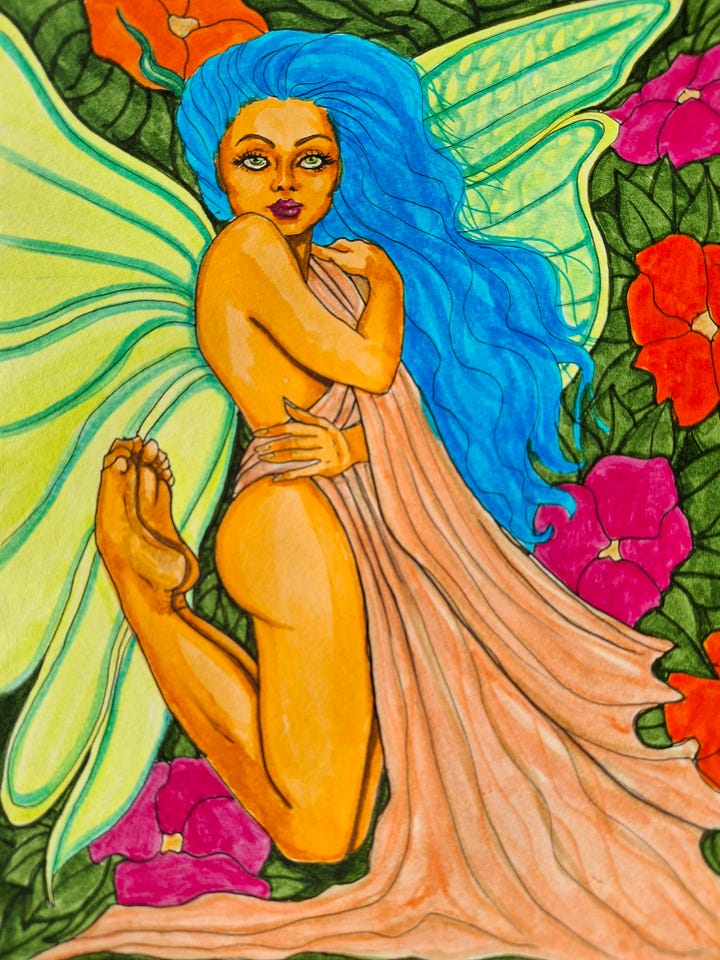
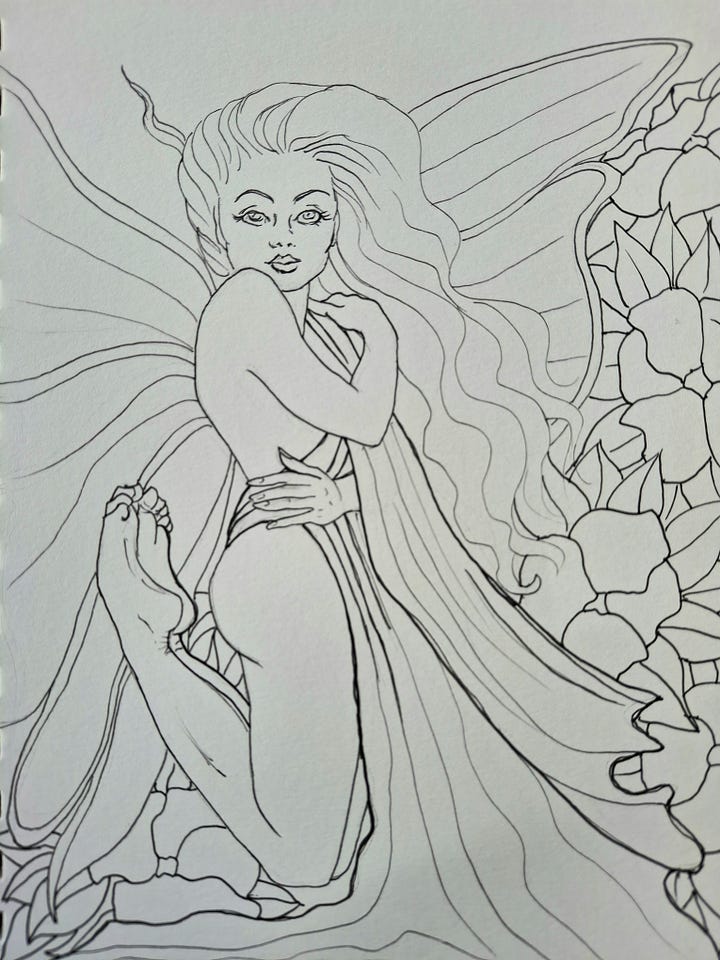
Áine is the Irish goddess of summer, sovereignty, and wealth, associated with midsummer, the harvest, beauty, and fertility. She is deeply connected to the land, and the legitimacy of kings depended on her favor, so her wrath could bring about their downfall.
Áine represents the sustenance that comes from the land, but also from love and physical union. She took both divine and mortal lovers, resulting in many half-fairy offspring. Often depicted as a fairy, and sometimes with a red mare, she’s the sacred embodiment of the golden abundance of the sun.
In one myth, she was violated by a king, and she took revenge by biting off his ear, thus rendering him physically imperfect and therefore unfit to rule. Sovereignty isn’t just about land, it’s about physical boundaries. Disrespect them and pay the price.
Day 22. Manananggal, Filipino Night Demon
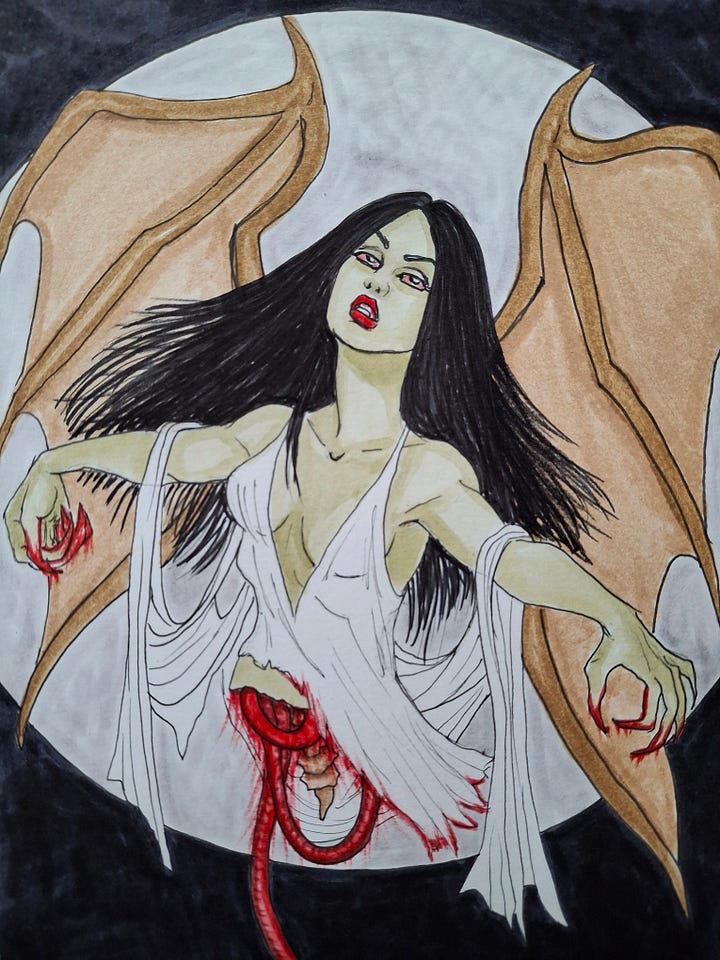
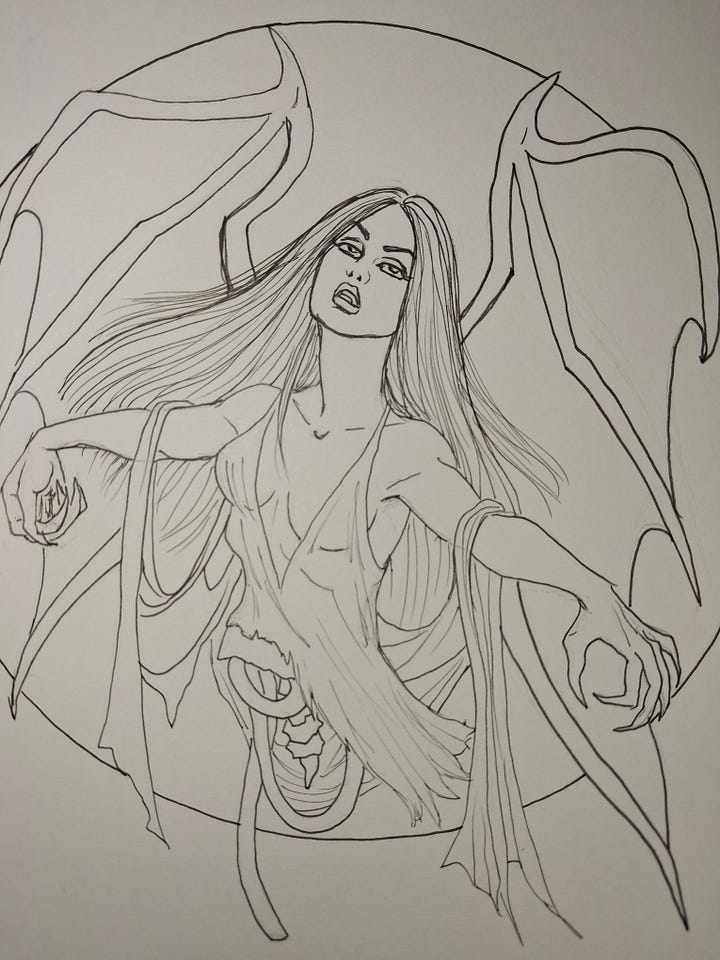
The manananggal is a terrifying, vampire-like creature from Filipino folklore whose name comes from the Tagalog word tanggal, meaning “to remove” or “to separate.” Unlike Chinnamasta, however, her motive isn’t enlightenment, it’s pure nightmare fuel.
By day, she’s a beautiful woman; by night, she transforms by separating her torso from her lower body and sprouting bat wings. She takes to the sky and hunts for human prey, her preferred victims being sleeping pregnant women, babies, newlyweds, and jilted lovers.
What motivates her, you may ask? In some interpretations, she’s like a demonic take on Taylor Swift, unable to get past the betrayal of a love affair gone wrong. If she can’t live happily ever after, no one will.
Like many other vampires in folklore, the manananggal can be defeated if she fails to reattach the two halves of her body by dawn. You can also prevent her from reattaching if you find her lower torso and sprinkle it with salt or garlic.
Day 23. Lilith, Mesopotamian Night Demon
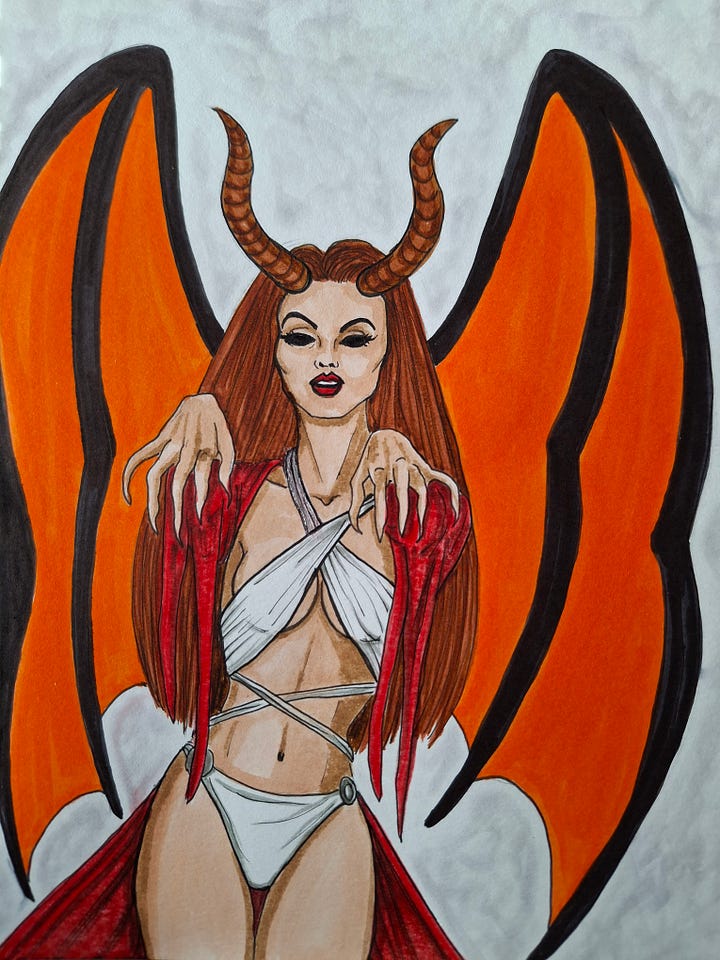
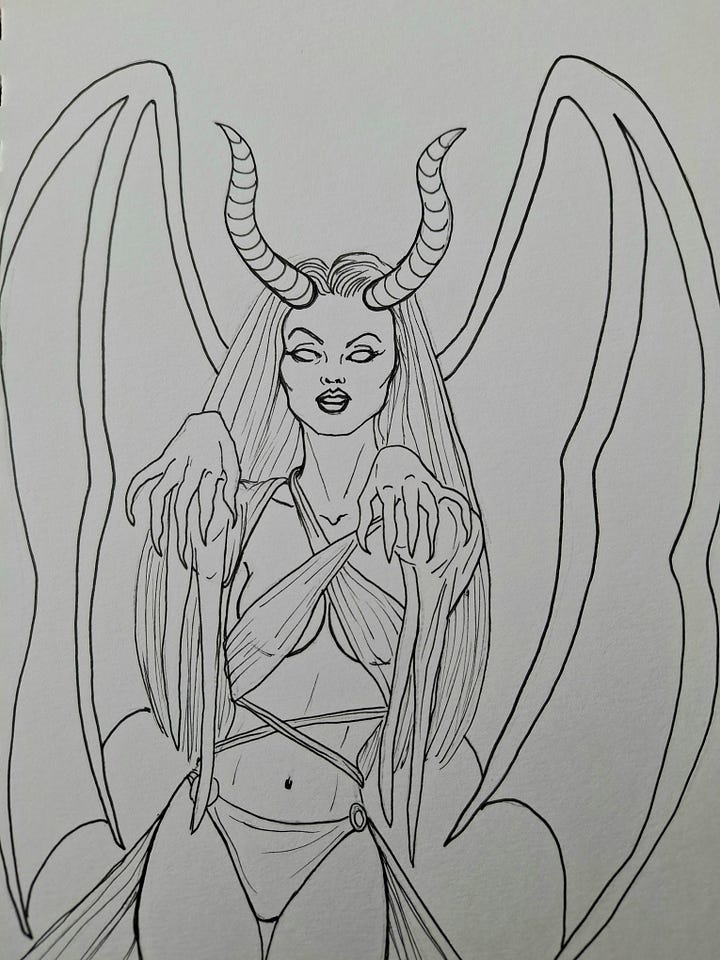
You may recognize the name Lilith from her brief but colorful role in Jewish folklore as the first wife of Adam, created separate and equal from the same earth as her husband, not as an animated rib of her mate.
She famously abandoned the Garden of Eden after refusing to submit to Adam, becoming a symbol of independence and defiance. She’s historically been interpreted as either a cautionary tale about the evil nature of the dark feminine, or a modern fuck-the-patriarchy icon.
But long before that, around 3,000 BC, Lilith was a demonic seductress in Mesopotamian and Akkadian mythology, known for bringing disease and death, especially to pregnant women.
The duality and enduring appeal of Lilith across thousands of years of mythology demonstrates just how deeply rooted our conflicted feelings about strong, independent woman are.
Is she an evil temptress, out for the blood of innocent young mothers, or a solitary child of the divine, who wouldn’t take shit from anyone, not even the original son of god?
Yes. She contains multitudes, just like all the women who came after her.
Day 24. Pomba Gira, Brazilian Sacred Harlot
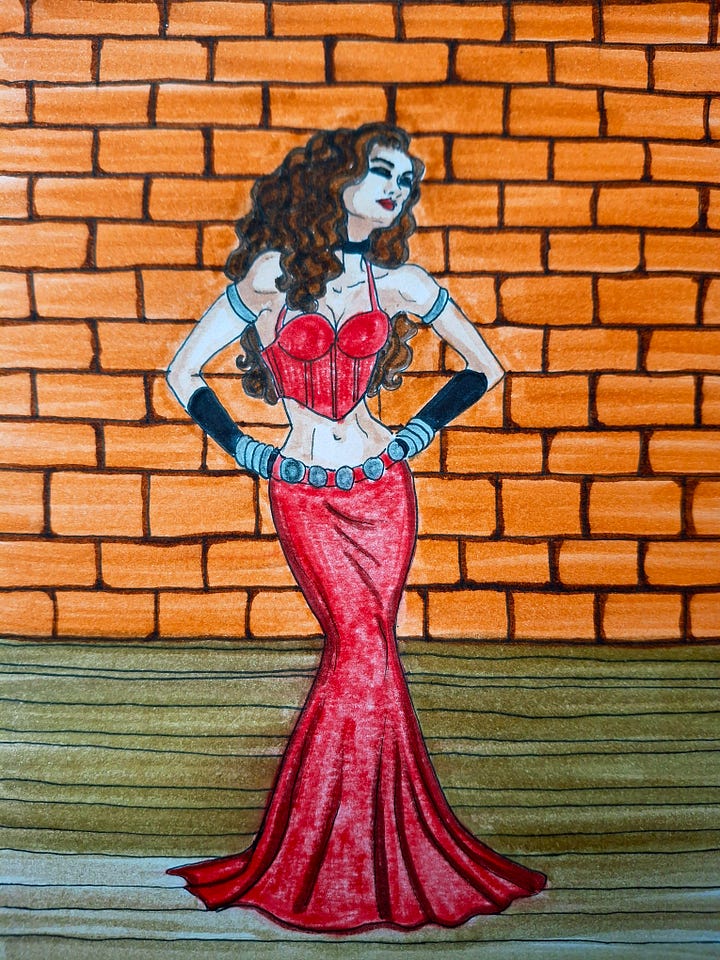
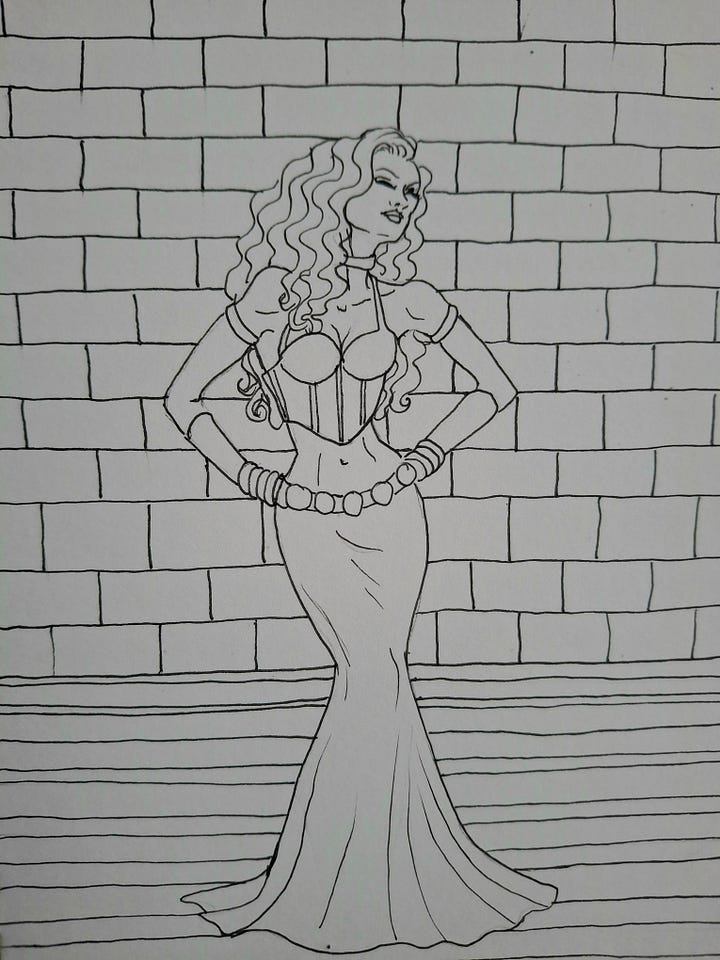
Can anyone sense an emerging theme for this week? It’s unintentional, I assure you! The order of the Inktober/Pinktober prompts just shook out that way…
Pomba Gira is an Afro-Brazilian spirit, actually a class of spirits, personifying female sexuality, desire, and freedom. Often described as the spirits of marginalized women on the fringes of society, like prostitutes and courtesans, Pomba Gira is a complex and powerful entity.
She’s almost always dressed in red from head to toe, with accents of black lace and silver jewelry, and her symbols include red roses, candles, cigarillos, and wine.
Strong and independent, bold and brash, she’s a confident and sensual woman who takes pleasure wherever she wishes, a champion of freedom and feminine power. In rituals, she is often called upon by those seeking independence or healthy relationships, and she bestows the gifts of self-respect and autonomy.
In some cases, though, she can be a spirit of vengeance, when someone takes advantage or commits an act of violation. Then she becomes the embodiment of female rage. She says, only on my terms. Take an inch more, and you’ll feel her wrath.
One week left of Inktober/Pinktober…
That was week four! Just one more week to go… Make sure you’re following me on Instagram, where I’m posting new drawings every day at MsPinkDotNet. If you’re taking up the challenge, please tag me. I’d love to see your work. See you next week!
#Inktober
#Pinktober
#Inktober2025
#Pinktober2025


